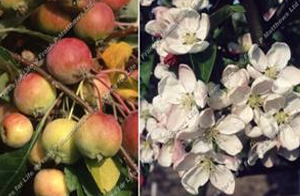Description
A good strong growing form with multicoloured copper and pink bark, one of the best forms of the albosinensis species.

£44.00
A good strong growing form with multicoloured copper and pink bark, one of the best forms of the albosinensis species.
A naturally dwarf tree with an upright habit, for even the smallest garden. Dark purplegreen leaves and stunning pink and white flowers in April. Persistent large, round, maroon fruit perfect for the best crab apple jelly. Bred by Hugh Ermen … Read More
Gentle weeping branches and the typical pink, flaking bark of the river birch make this an excellent introduction. A worthy substitute for Betula pendula ‘Youngii’ with bonus features of bark and good yellow autumn colours. (North Carolina State University, USA)
Striking white bark and large drooping dark green leaves. One of the loveliest birches with dazzling white stems. The origins of this selection are from some of the earliest grafted trees of B. jacquemontii by Hillier Nursery, Hampshire.

An exciting new introduction with spectacular large orange-pink fruit that persist much longer than most large fruited crab apples. Strong white blossom covers this vigorous but compact tree in spring. Makes excellent pink jelly. (New Zealand)

This small, broadly columnar tree has brown flaking old bark which shows cinnamon coloured new bark beneath. The three lobed yellowish-green leaves turn red and scarlet in autumn. Pale greenish-yellow flowers in late spring. Grows best in sun and light shade and on … Read More
A charming semi weeping (umbrella-shaped) tree with flower trusses of delicate pink buds opening to white followed by stunning bright red fruits. Apple blossom scented flowers add to its many fine features. (Bristol, UK)

A conical tree with dark green lobed leaves and large soft pink to white flowers. Small red and yellow fruits, rather like mini apples, holding well into winter. An excellent pollinator for apples.
One of the darkest barked birch with true plain chocolate bark in the early years changing to all shades of brown as it ages. (Wakehurst Place, Sussex)
